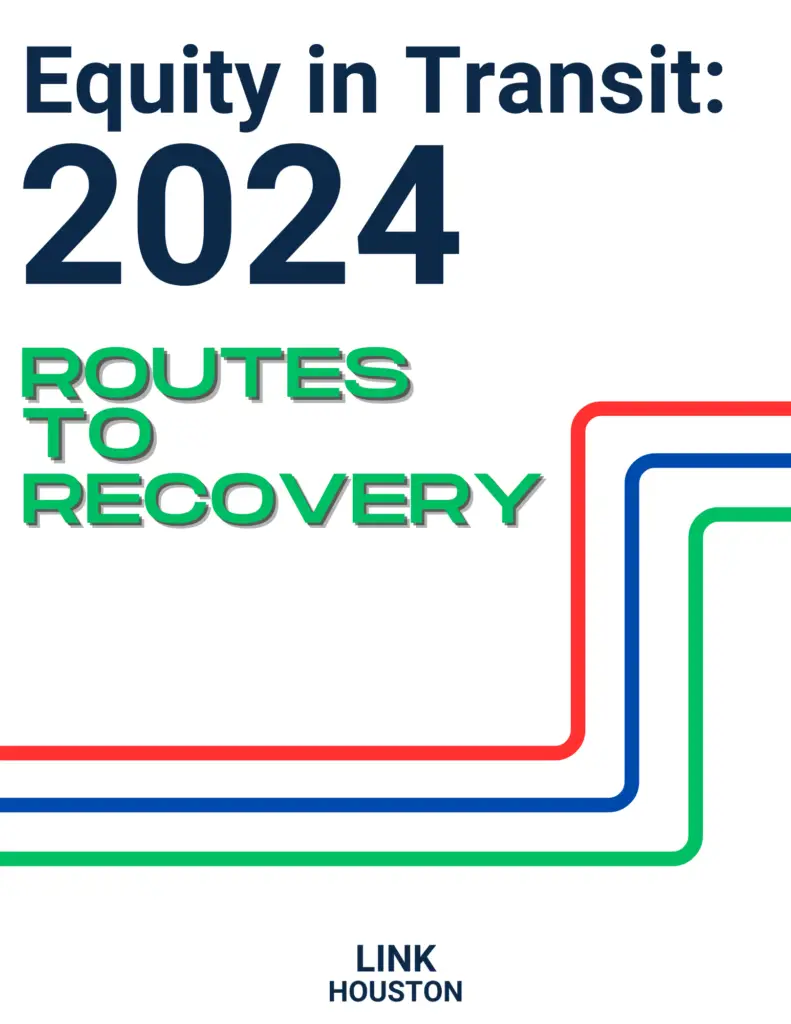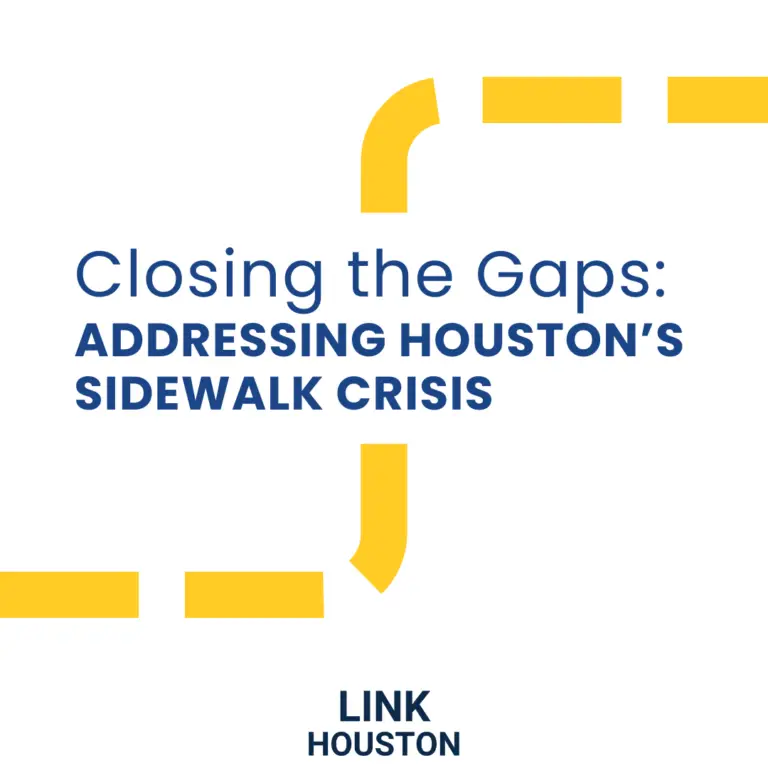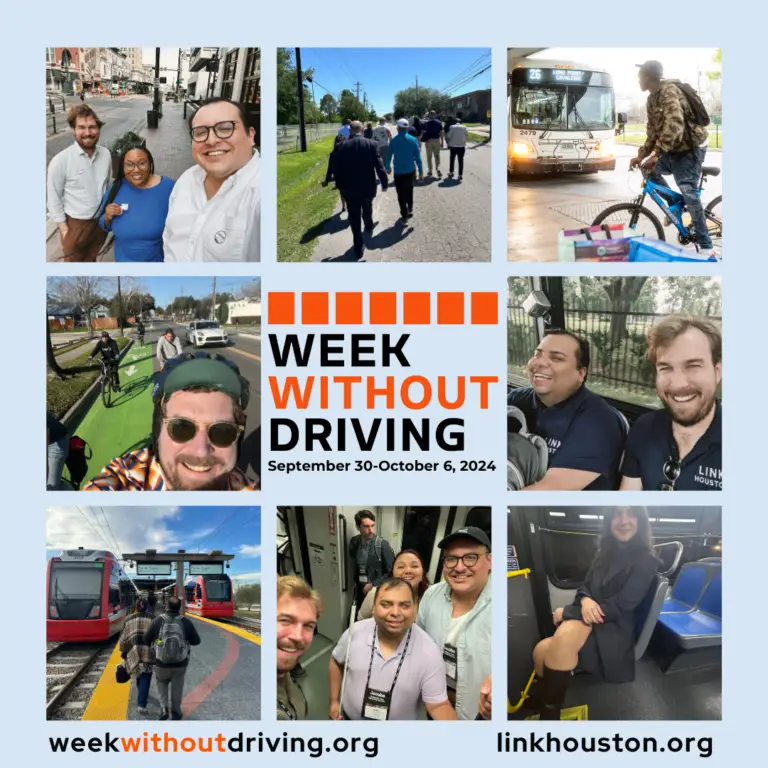Executive Summary
Public transit plays an essential role in connecting thousands of Houstonians to work, school, healthcare, and many other opportunities. Equity in Transit: 2024 combines data analysis and riders’ experiences collected through the 2024 Houston Bus Riders Survey. The report explores how transit has, and should connect people to opportunity in Houston, with a particular focus on service recovery of the Metropolitan Transit Authority of Harris County (METRO) following the onset of the COVID-19 pandemic in 2020. The study also updates the Transportation Equity Demand Index (TEDI), which demonstrates continued need for equitable improvements and investments in public transit in the Houston region. Based on the data analysis and riders’ feedback, LINK Houston provides recommendations to METRO to improve its services and better serve the riding public.
While METRO ridership fell 61% between February and April 2020, it has since increased steadily at an average of 24% per year. Weekly ridership in February 2024 is 86% of weekly ridership in February 2020 – the second highest recovery among the top 20 metro areas – with local bus ridership at 95% of that pre-COVID level. Yet, many riders continue waiting longer for the bus than in 2019. We compared service levels for all METRO routes between October 2019 and October 2023 and found that many routes are running less frequently at key times of day – making wait times longer and trips harder to plan. Maximum wait times have increased the most on many Green routes (METRO’s least frequent services) at rush hour, and on many formerly Red routes (METRO’s most frequent services) on weekends. Most routes with reduced service are within high demand areas for affordable transportation as demonstrated by the TEDI.
LINK Houston and volunteers surveyed 299 people about their experience using METRO, 90% of whom were current riders. The most common concern was frequency – 38% of those surveyed want shorter wait times for the bus. Many riders specifically mentioned wait times at weekday rush hour and on weekends are longer than before the pandemic. Many riders also mentioned the need for shorter wait times when making connections between multiple routes. Of those surveyed who reported riding less often, 52% cited frequency as a factor. Other common concerns include reliability (22% of responses), safety (16%), and issues with stops and sidewalks (15%).
Recommendations
Based on rider feedback and analysis of current service levels, running more frequent service is METRO’s best opportunity to increase ridership and better serve populations in TEDI high demand areas. The top priority recommendation is for METRO to re-affirm their commitment to increase service by 25% above pre-pandemic levels, as outlined in the METRONext Moving Forward Plan. METRO should develop a plan on how that service will be allocated, focusing first on frequency at peak hours and on weekends in TEDI high demand areas, and engage riders and the broader public beyond the required notice materials for public hearings. Other recommendations include:
- Ensure all on-time performance data is publicly available.
- Take a comprehensive approach towards rider safety.
- Work with partners to improve stops, sidewalks, and crosswalks.
- Accelerate the voter-approved METRONext Moving Forward Plan, focusing first on TEDI high-demand areas.






